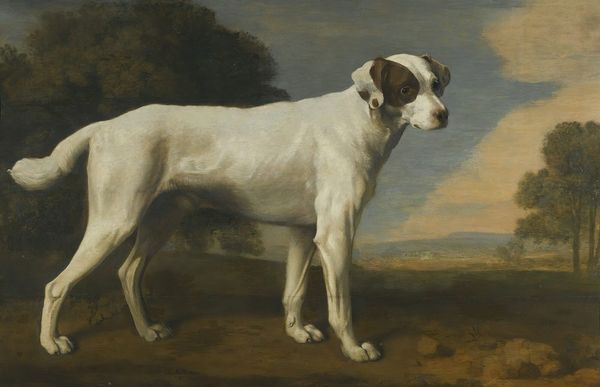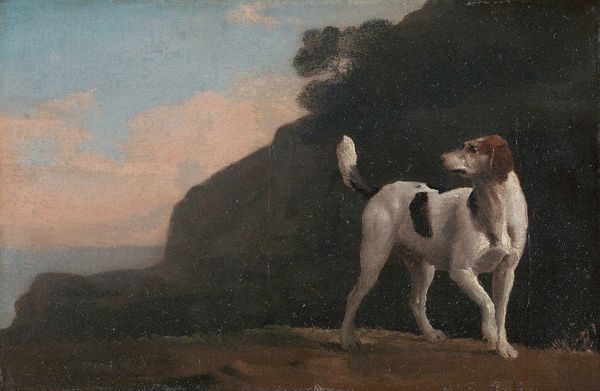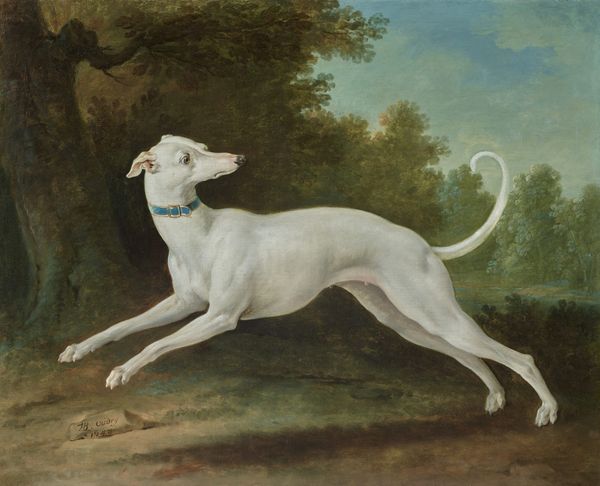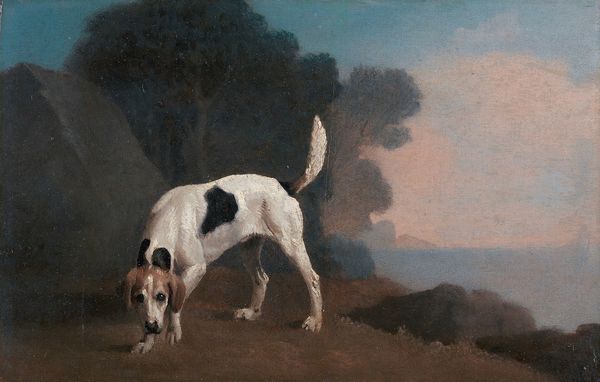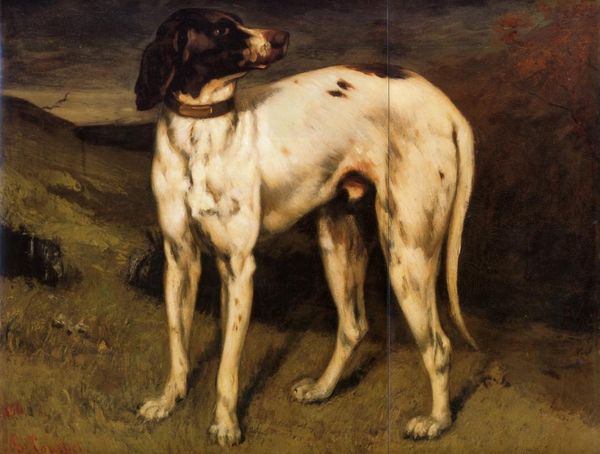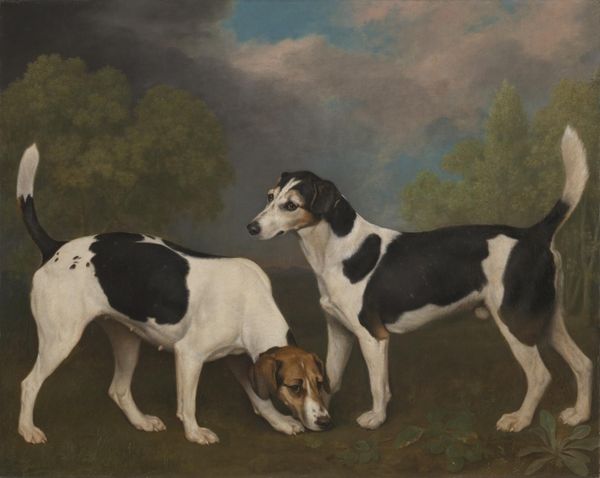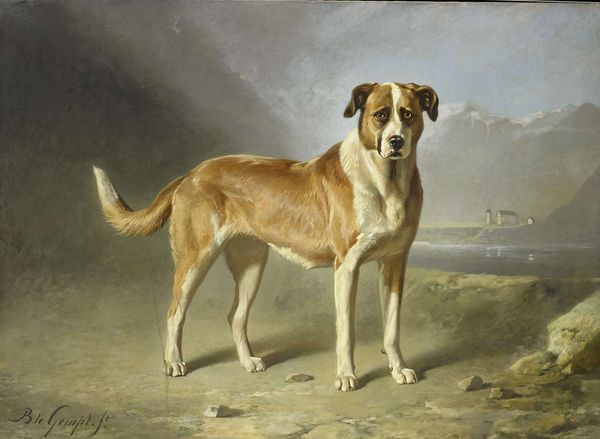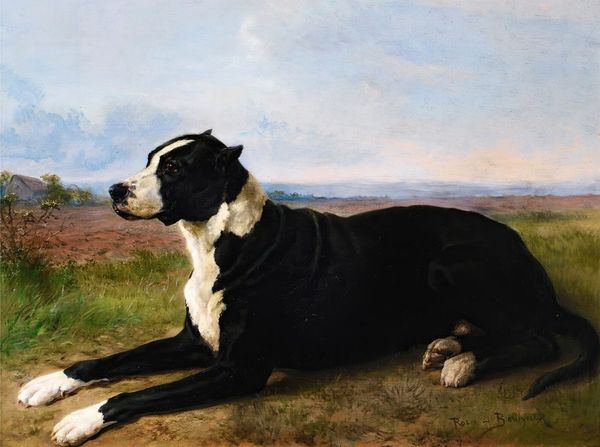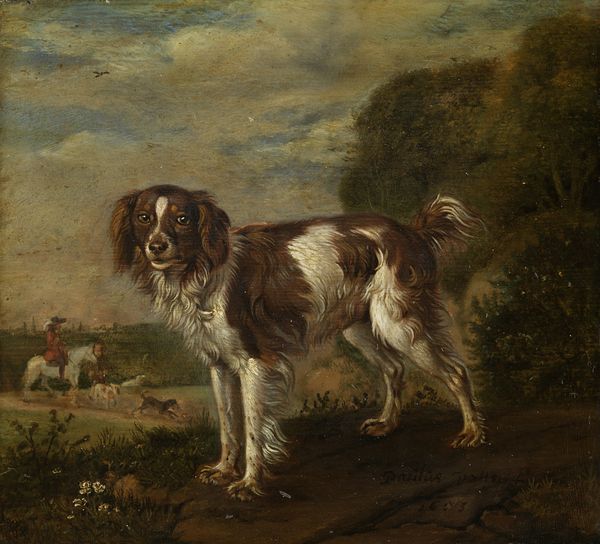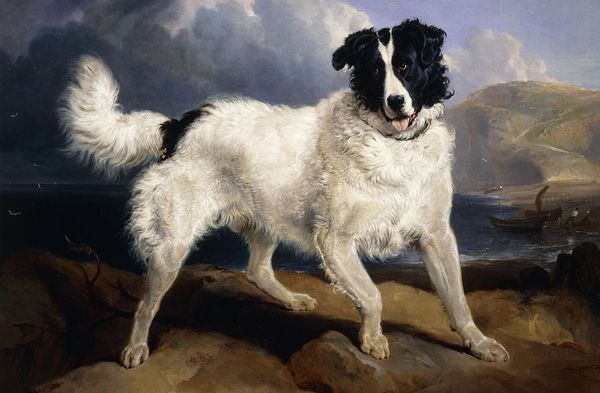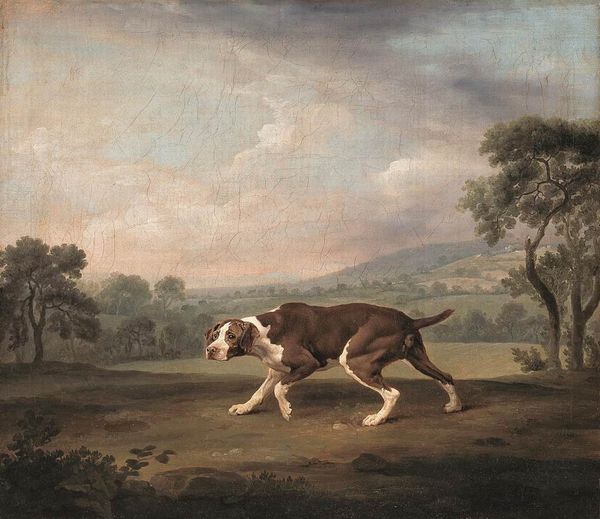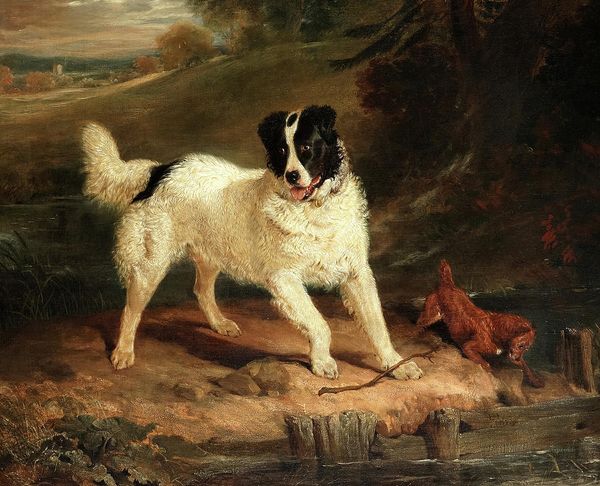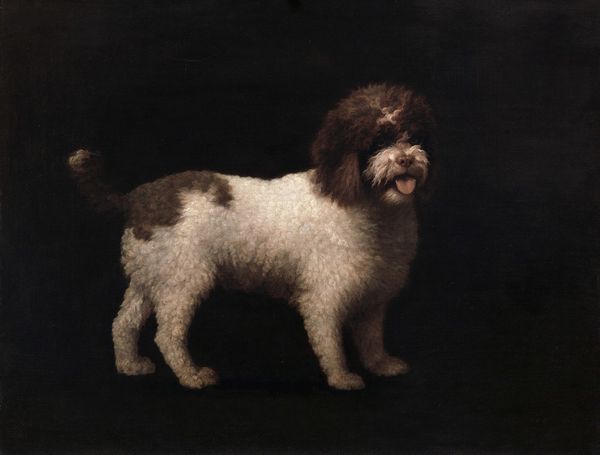
Dimensions: support: 921 x 1146 mm frame: 1075 x 1304 x 70 mm
Copyright: CC-BY-NC-ND 4.0 DEED, Photo: Tate
Curator: James Seymour's "Pointer Bitch," part of the Tate collection, presents us with a fascinating insight into the world of 18th-century sporting art. Editor: Well, first thought, it's oddly beautiful. There’s something haunting about the scale of the dog against that expansive landscape. It feels almost dreamlike. Curator: The painting likely served a very specific function, showcasing the prized animal as a status symbol, reflective of land ownership and leisure activities. The material realities of hunting and the consumption it represents are embedded. Editor: Maybe, but I see a soulful creature caught between loyalty and wildness, gazing at something beyond our view. It’s more than just a trophy; it’s got this melancholic air, as if yearning. Curator: Considering Seymour's background in a tapestry workshop, perhaps the composition owes as much to that tradition as it does to naturalism. Editor: Either way, it stirred something in me. A bit sad, a bit noble. Curator: Precisely, understanding the work, from its canvas to its aristocratic patron, opens up a rich understanding of its time. Editor: And sometimes, just sometimes, it’s about feeling it too.
Comments
Join the conversation
Join millions of artists and users on Artera today and experience the ultimate creative platform.
tate 8 months ago
⋮
Many eighteenth-century landowners commissioned portraits of their favourite dogs and horses, from artists who specialised in such pictures. Although many of these artists are now forgotten, a few, including Seymour, became better-known and are recognised figures in art history. Nonetheless, the simple format, and descriptive painting style, of pictures like this are very similar to so-called ‘naïve’ paintings. Gallery label, February 2010
